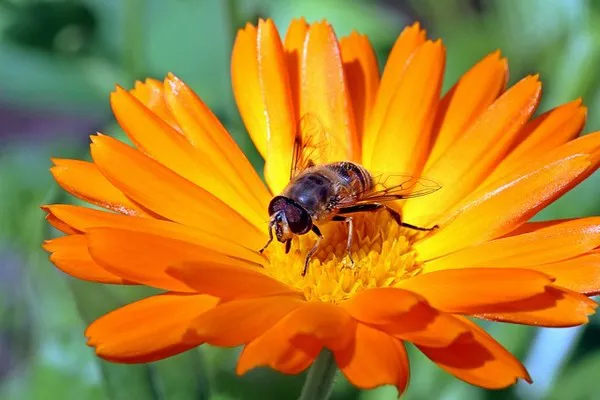Marigolds, with their vibrant hues and distinct aroma, have enchanted humanity for centuries. These hardy annuals belong to the genus Tagetes, encompassing various species native to the Americas. From their traditional uses in indigenous rituals to their prominence in modern gardens, marigolds hold a significant place in both botanical and cultural realms. In this comprehensive exploration, we delve into the intricate characteristics, ecological significance, cultural symbolism, and practical applications of the marigold flower.
Taxonomy and Morphology
The genus Tagetes encompasses approximately 50 species of flowering plants, commonly known as marigolds. These herbaceous annuals or perennials are part of the Asteraceae family, which also includes daisies and sunflowers. Among the most widely cultivated species are Tagetes erecta (African marigold), Tagetes patula (French marigold), and Tagetes tenuifolia (signet marigold).
Marigolds exhibit diverse morphological traits, ranging from compact, bushy forms to tall, erect stems. Their foliage consists of finely divided, pinnate leaves, often aromatic when crushed. The flowers, characterized by their prominent central discs and ray florets, display a spectrum of colors, including vibrant yellows, oranges, and reds. Some varieties boast bi-colored or multi-layered petals, adding to their ornamental appeal.
Ecological Role and Habitat
Marigolds thrive in diverse climates and soil conditions, contributing to their widespread distribution across the globe. Indigenous to regions of North and South America, these plants have naturalized in various habitats, from arid deserts to moist, fertile plains. Their adaptability to different environmental stressors, including drought and poor soil quality, underscores their ecological resilience.
Beyond their ornamental value, marigolds play crucial roles in agroecosystems. Their strong fragrance and chemical properties deter pests, making them popular companion plants in vegetable gardens and agricultural fields. Additionally, marigolds attract beneficial insects like pollinators, further enhancing ecosystem biodiversity. The roots of certain marigold species also exude compounds that suppress soil-borne pathogens, a phenomenon known as allelopathy.
Cultural Significance and Symbolism
Throughout history, marigolds have held profound cultural significance in various societies worldwide. In Mesoamerican civilizations like the Aztecs and the Maya, marigolds were revered for their sacred attributes and utilized in religious ceremonies and offerings. The Aztecs associated marigolds with the sun god, Huitzilopochtli, and used them in rituals honoring deceased ancestors during the Day of the Dead festivities.
In Hindu traditions, marigolds symbolize auspiciousness, purity, and devotion. They feature prominently in religious rituals, adornments, and festive decorations, particularly during ceremonies honoring deities like Lakshmi and Durga. Marigold garlands, known as ‘genda phool,’ hold special significance in Indian culture, signifying prosperity and blessings.
In Western cultures, marigolds have multifaceted symbolism, often representing concepts like resilience, endurance, and protection. They are commonly associated with themes of warmth, optimism, and cheerfulness, making them popular choices for celebratory occasions like weddings, festivals, and graduations. Furthermore, marigolds have historical associations with the Virgin Mary in Christian iconography, symbolizing her divine grace and protection.
Practical Applications and Economic Importance
Beyond their cultural and aesthetic appeal, marigolds boast numerous practical applications with economic significance. In horticulture, they serve as ornamental bedding plants, adding vibrant splashes of color to gardens, parks, and landscapes. Their prolonged flowering period and low maintenance requirements make them popular choices for both novice and experienced gardeners.
Marigolds also play a vital role in the pharmaceutical and cosmetic industries. Extracts derived from marigold flowers, particularly Tagetes erecta, possess anti-inflammatory, antimicrobial, and wound-healing properties. These bioactive compounds find applications in herbal remedies, skincare products, and herbal supplements, catering to a growing market demand for natural and sustainable ingredients.
Furthermore, marigolds contribute to sustainable agriculture practices through their biopesticidal properties. Commercial formulations of marigold extracts and essential oils serve as eco-friendly alternatives to synthetic pesticides, promoting pest management while minimizing environmental harm. Their efficacy against common agricultural pests like nematodes and aphids underscores their potential in integrated pest management strategies.
Conclusion
The marigold flower, with its botanical diversity, ecological resilience, and cultural significance, continues to captivate humanity across continents and generations. From ancient rituals to modern applications, marigolds embody a rich tapestry of symbolism, tradition, and practical utility. As we navigate the complexities of a rapidly changing world, the enduring allure of the marigold serves as a reminder of nature’s beauty, resilience, and timeless relevance.


